Warren Kamanzi (177cm/5’9”, 70kg/154lbs) is a name that started being hyped a little bit among some of those interested in Nordic football in late 2022. Toulouse were quick to make their move and secure the 22-year-old right-back’s signature at the beginning of the 2023 January transfer window, adding the Norwegian to their squad for the second half of the 2022/23 Ligue 1 campaign following a €600k transfer from Tromsø IL.
Kamanzi is a young player with just one season of top-flight football to his name — that coming in 2022 at Tromsø. He’s yet to make an appearance for Norway’s senior national side but has two appearances to his name for his country’s U21s.
So, why did Toulouse opt to sign Kamanzi? And what can supporters of Le Téfécé expect from their new full-back recruit? This tactical analysis and scout report seeks to answer those two questions via a combination of data analysis and video analysis.
We’ll look at why Carlo Ancelotti-inspired Philippe Montanier’s Toulouse may have decided to dip into the Norwegian market, why Kamanzi was their chosen one to fill a void in their squad and provide analysis of some key elements of the 22-year-old’s game while examining his role within his former team’s tactics and discussing how he may develop further into the future as his career progresses.
Why Norway?
Toulouse are no strangers to shopping in the Nordic football market. Over the past 18 months, they’ve brought in centre-back Rasmus Nicolaisen from Danish side Midtjylland, right-back Mikkel Desler from Norwegian side Haugesund, goalkeeper Kjetil Haug from Norwegian side Vålerenga, left-back Oliver Zandén from Swedish side Elfsborg, attacking midfielder/winger Veljko Birmančević from Swedish side Malmö FF and, now, Kamanzi from Tromsø.
So, on this occasion, why Norway?
To answer that question, let’s first examine what Toulouse look for from their full-backs. They rely on their full-backs a lot for crossing, with Toulouse playing the 10th-most crosses (13 per 90) of any Ligue 1 side this season, with left-back Issiaga Sylla playing the most in the team with 2.66 per 90 and right-back Desler playing the fourth-most of any player at the club with 2.11 per 90.
Le Téfécé have made the third-fewest dribbles per 90 (20.34) in Ligue 1 this term — not an outstanding statistic — with Sylla making the most of any Toulouse full-back by far with 2.73 per 90 (seventh of any Toulouse player). Toulouse’s only other right-back, Desler, falls at 16th for dribbles per 90 with 1.43 to his name — the fewest of any Toulouse full-back, highlighting potential room for improvement in this area in Toulouse’s right-back department, should they wish to boost this area on the right side.
Defensively, Toulouse have the fourth-lowest PPDA (8.99) in Ligue 1 this term, indicating their aggressive press, they’ve had the third-most defensive duels per 90 (72.56) with Desler engaging in the third-most of any Toulouse player with 9.19 per 90 (61.47% success), quite impressive from the existing Toulouse right-back.
Le Téfécé have also made the third-most interceptions (42.04 per 90) of any Ligue 1 side this term, with left-back Sylla falling fourth in the club with 5.69 per 90 and Desler coming in at seventh with 4.55 per 90.
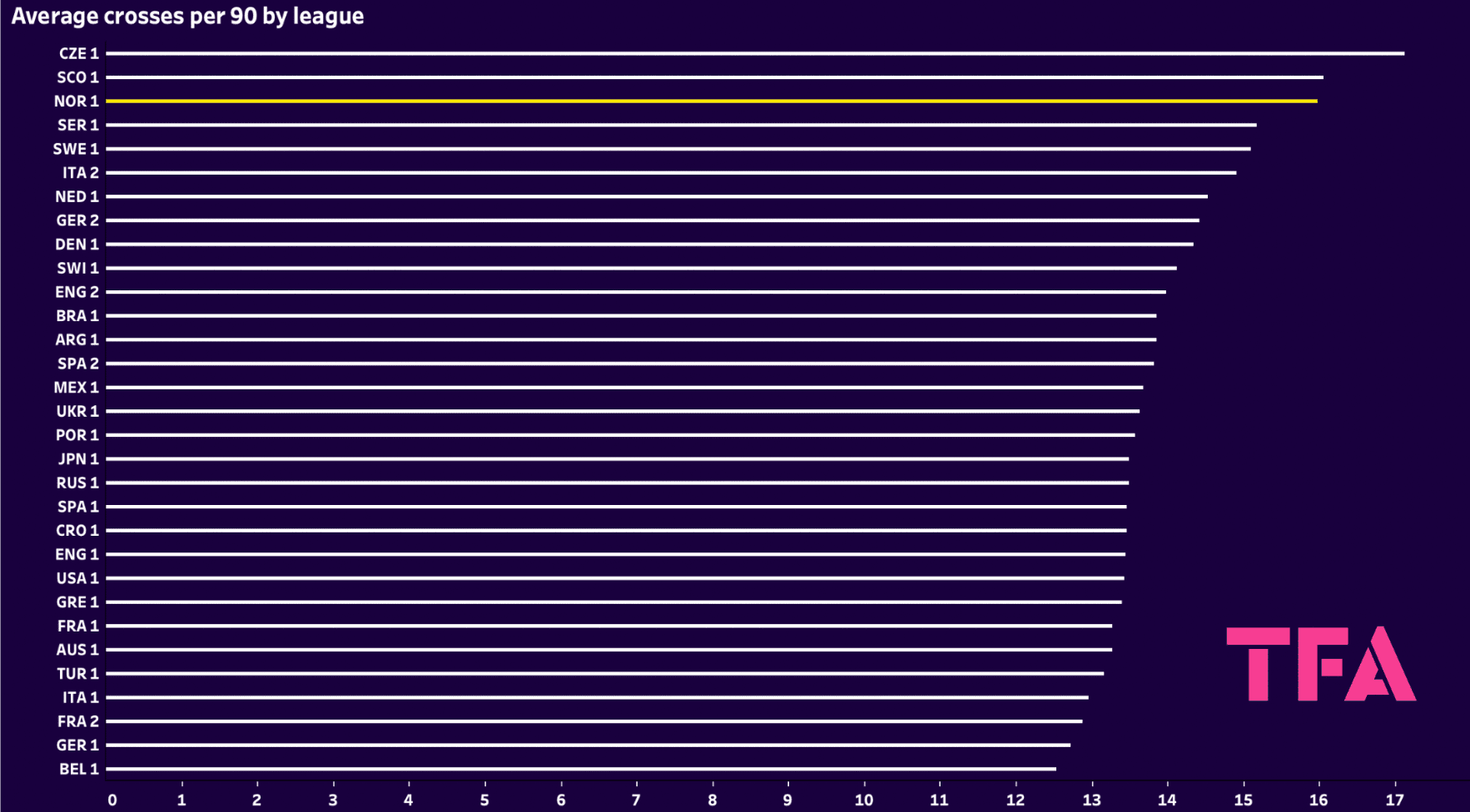
We’ve stylistically compared several of the world’s top leagues in some of the key areas mentioned above to show why Le Téfécé considered Norway for their right-back search. Starting with figure 1, we can see that the Norwegian top flight saw a relatively high number of crosses per 90 in 2022 compared with other leagues of a somewhat similar high level this term.
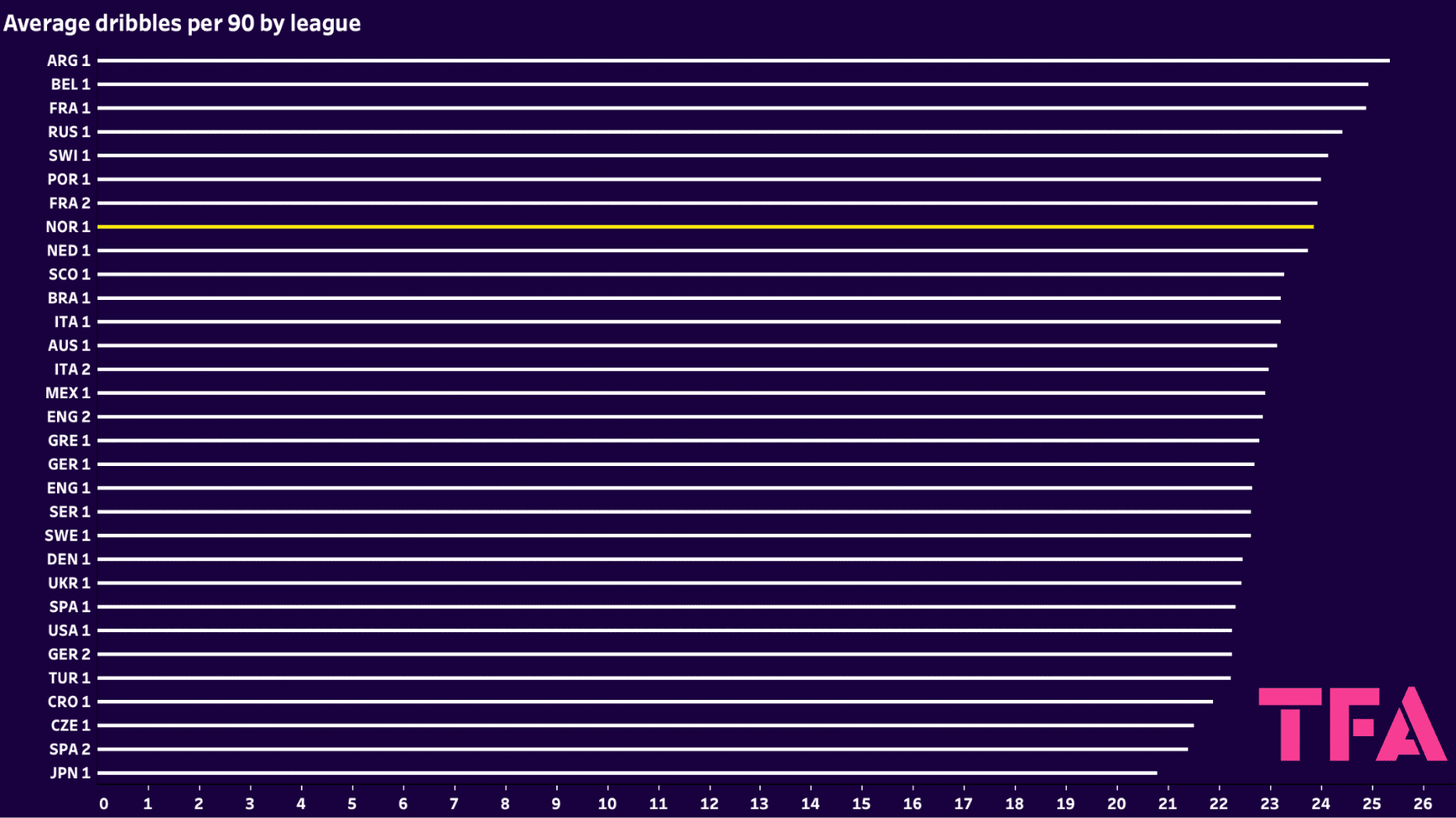
For dribbling volume, Norway also ranked quite highly, as shown in figure 2, and when we move on to figure 3 below to examine progressive runs per 90, we observe perhaps even more interesting results.
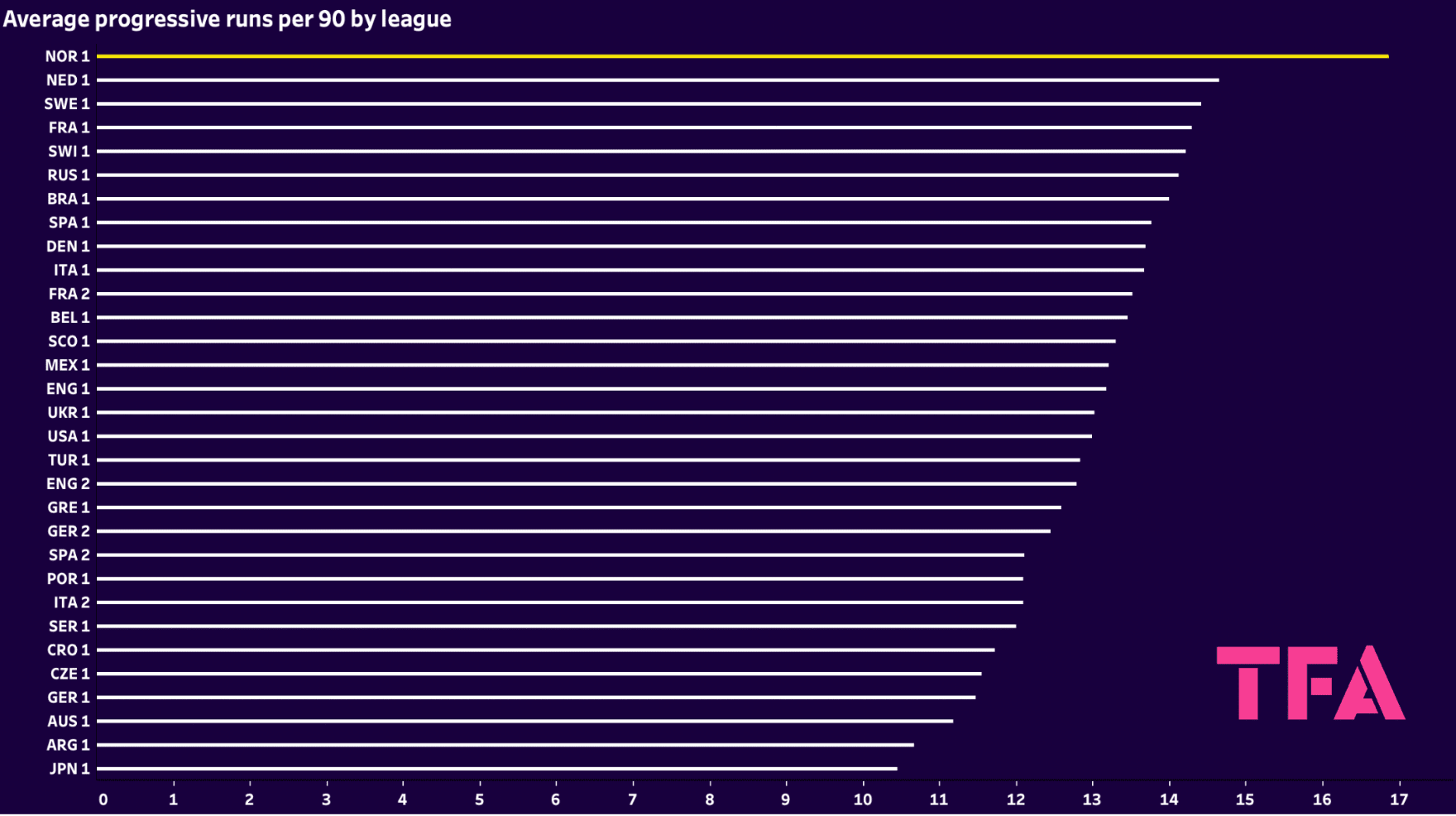
In 2022, the Norwegian top flight saw a lot more progressive runs per 90 than other top leagues around the world have seen this season.
Immediately, when considering what Toulouse were looking for at right-back in possession, it becomes abundantly clear why Norway became an interesting option for them.
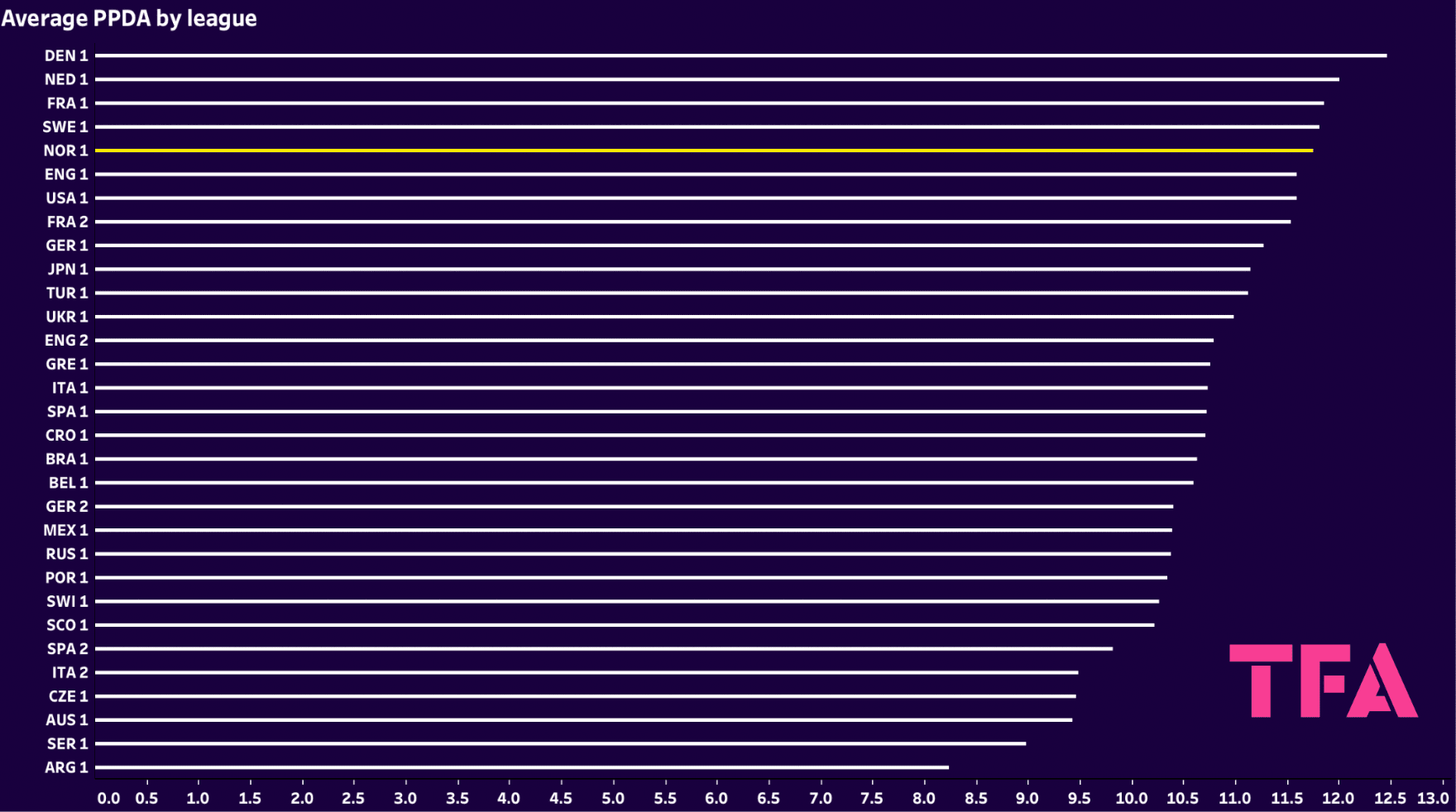
In terms of the key defensive metrics, Norway’s Eliteserien actually had a relatively high PPDA in 2022 but still lower than Ligue 1’s average PPDA this term.
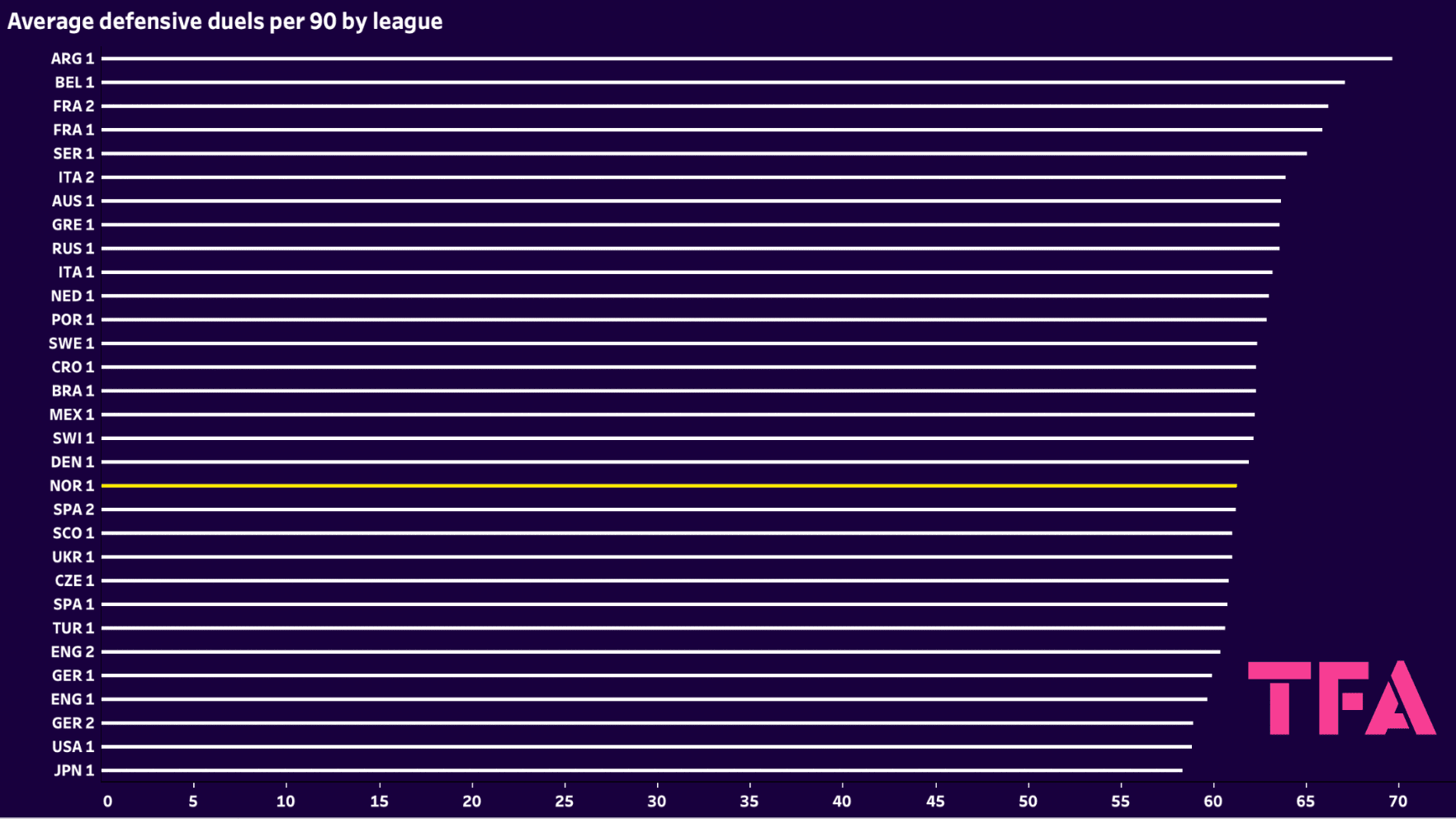
The Eliteserien saw somewhat fewer defensive duels per 90 than perhaps would’ve been considered ideal, as figure 5 displays. However, as we move on to figure 6 below, we can see that the Norwegian top flight ranks quite highly in terms of interceptions per 90.
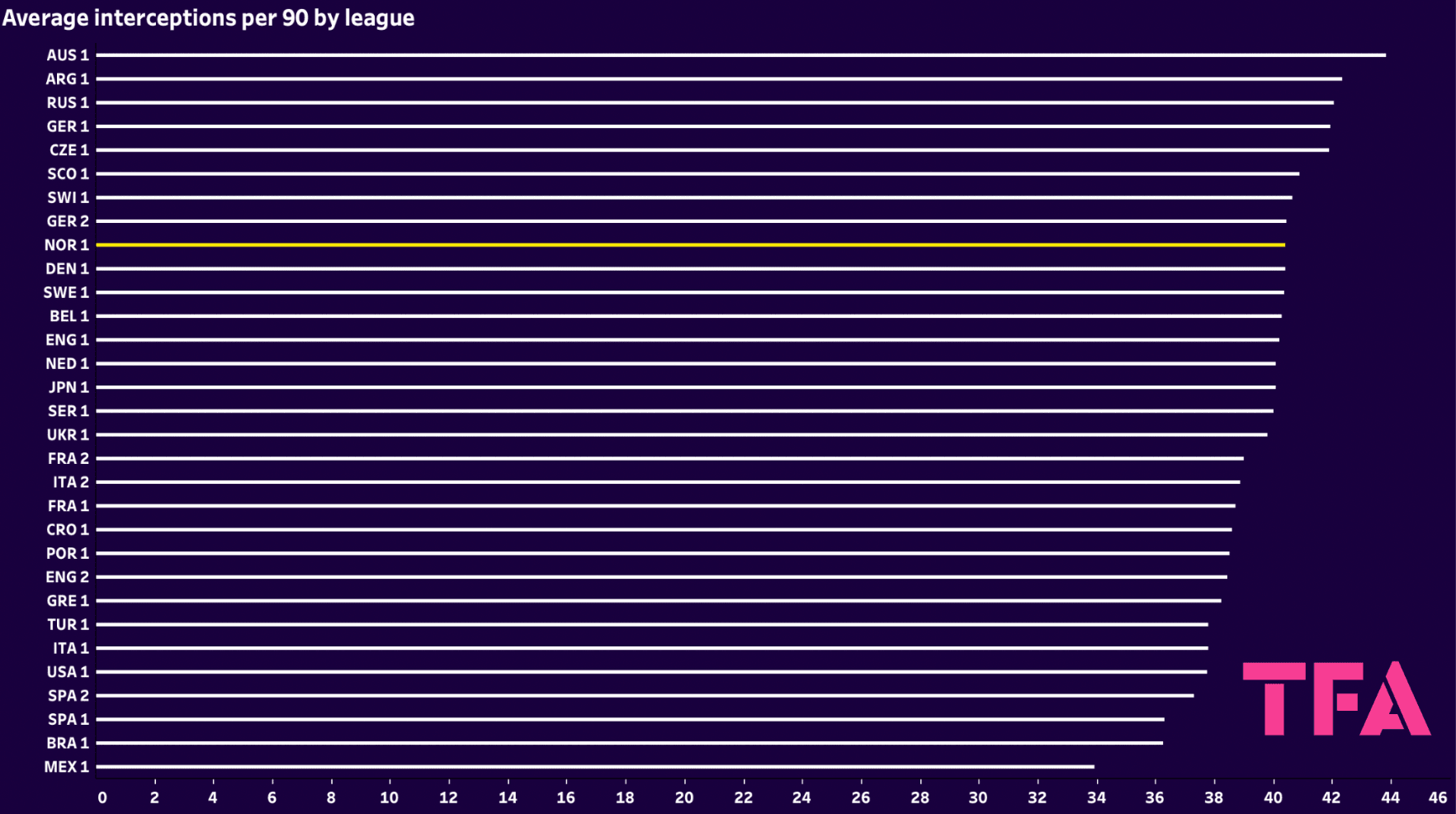
Still, as we’ll go on to discuss in further detail in our next section, it’s evident that Toulouse prioritised their offensive wants and needs over the defensive ones in their search for a new right-back.
From this examination of different leagues Toulouse could’ve potentially considered for their search, perhaps Sweden’s Allsvenskan, the Scottish Premiership, the Netherlands’ Eredivisie, the Swiss Super League and the Danish Superliga are among other leagues Le Téfécé will have considered during their quest.
Why Kamanzi?
So, after determining ‘why Norway?’, the next retrospective question to ask might be ‘why Kamanzi?’
Tromsø played the 13th-most crosses (13.61 per 90) in the Eliteserien last season, with Kamanzi playing the second-most in the team (3.63 per 90) — also a high number of crosses per 90 for an Eliteserien full-back.
TIL stood out as dribblers, making the fourth-most dribbles per 90 (24.97) of any Eliteserien side last term; Kamanzi made the second-most dribbles of any Tromsø player in 2022, delivering 5.56 per 90 — the most of any Eliteserien right-back — while maintaining a decent 66.34% dribble success rate. For progressive runs, Tromsø made the sixth-most in Eliteserien (17.67 per 90), with Kamanzi contributing 4.62 per 90, which ranks very highly among Eliteserien full-backs.
Tromsø ranked sixth in the league for defensive duels per 90 (64.28) with Kamanzi ranking fourth in the team with 7.43 per 90 and a solid 65.93% defensive duel success rate. In terms of interceptions, however, Tromsø ranked quite low in Eliteserien last term, delivering the 14th-fewest of any side in the league (35.99 per 90) and with Kamanzi making just 3.3 per 90 — quite low among Eliteserien right-backs.
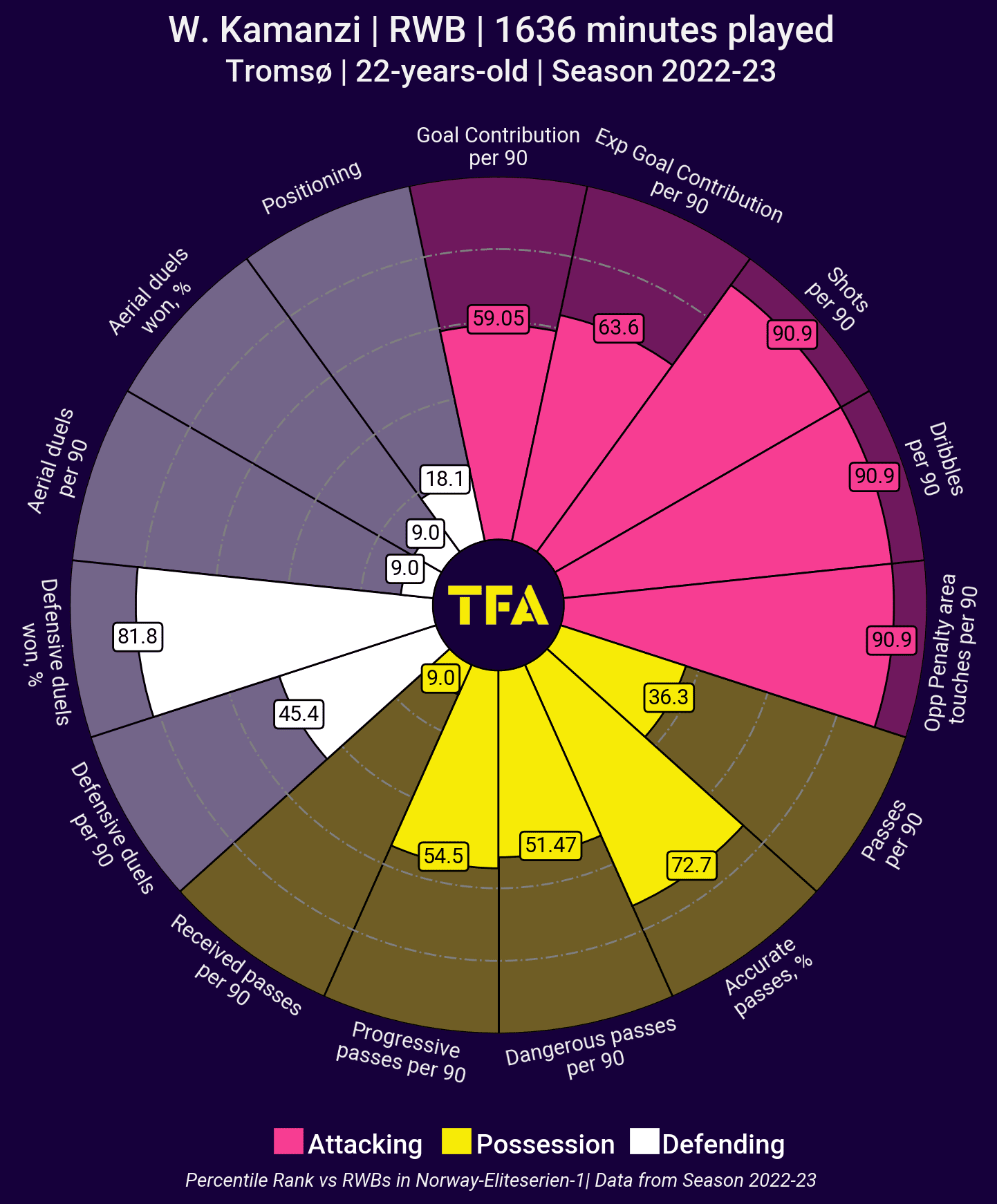
As these stats and the pizza chart in figure 7 indicate, then, Kamanzi stood out as an excellent ball progressor and creative force from right-back for Tromsø last season.
The 22-year-old demonstrated brilliant ball-carrying ability, a propensity to get into decent crossing positions quite a lot and a generally solid level of reliability in defensive duels, all of which will have appealed to Toulouse in their right-back hunt, especially from an offensive perspective.
Analysing Kamanzi’s game
Our final section of analysis seeks to explore what exactly Toulouse fans can expect from Kamanzi on the pitch.
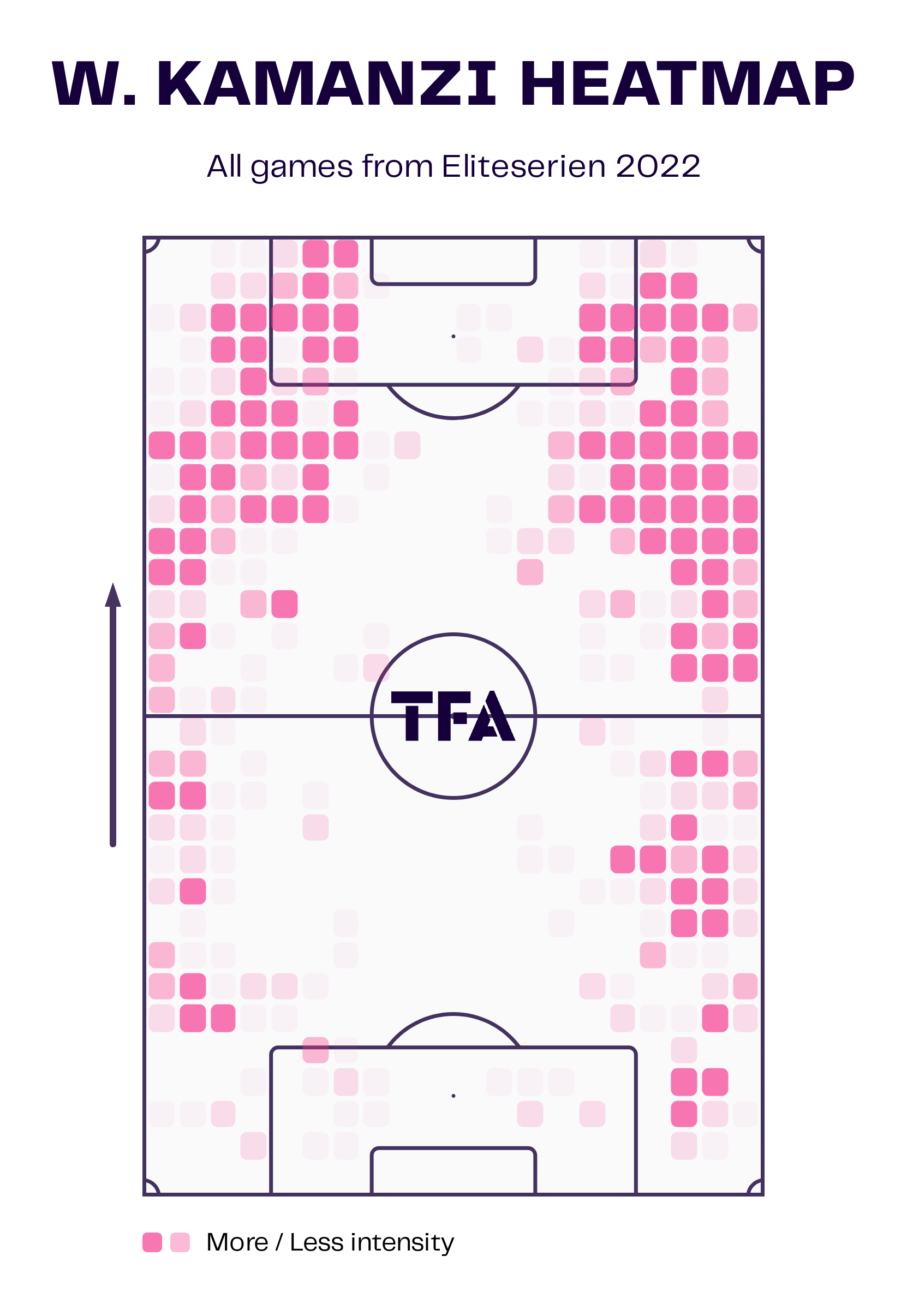
As the heatmap in figure 8 shows, Kamanzi tends to position himself in quite advanced areas of the pitch. This is a big part of the reason why he makes very few progressive passes (4.57 per 90) compared to other Eliteserien right-backs — it’s not necessarily anything to do with his technical ability to do so, rather it’s a result of his role in the team and the lack of impetus on him to perform progressive passes.
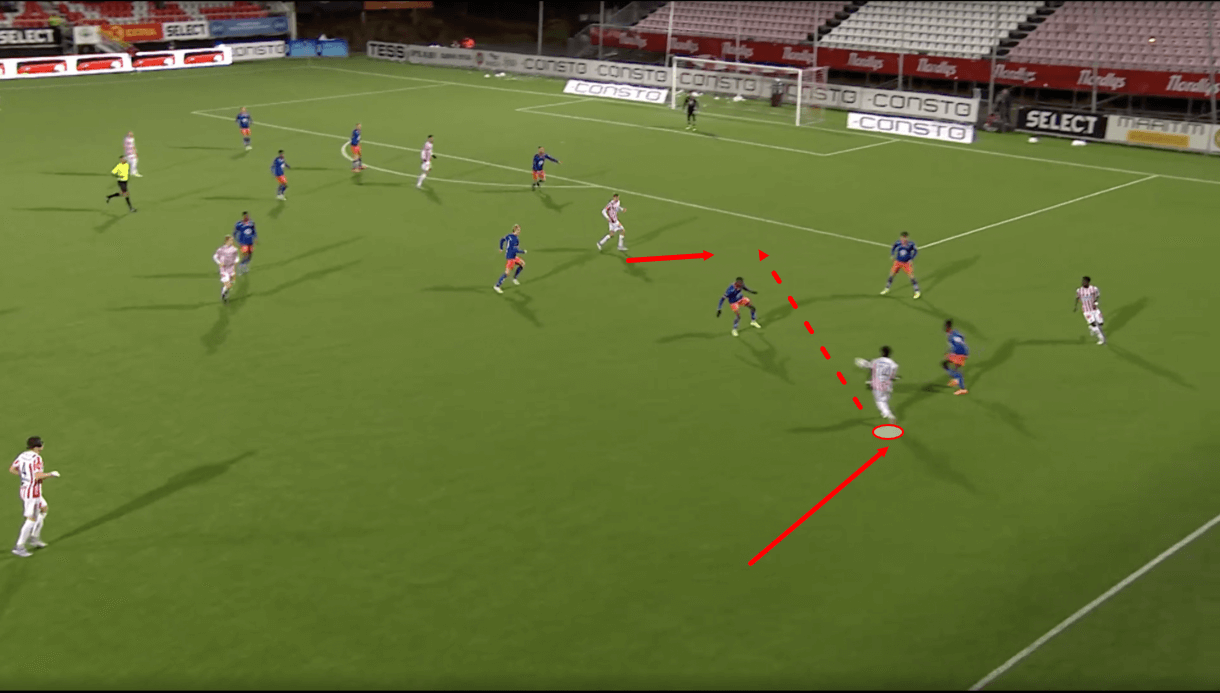
Occasionally, you will see Kamanzi pick up the ball out wide, spot an opportunity for a line-breaking pass to split the opposition’s midfield and/or defence open and execute on it, as we see in figure 9, for instance. However, the opportunity to play progressive passes doesn’t present itself to Kamanzi as often as it would if he was performing a deeper role and was more involved in the first two phases of play.
Instead, though, Kamanzi comes alive in the final third. His key responsibilities in possession, at least during his time with Tromsø, lay in the chance creation phase.
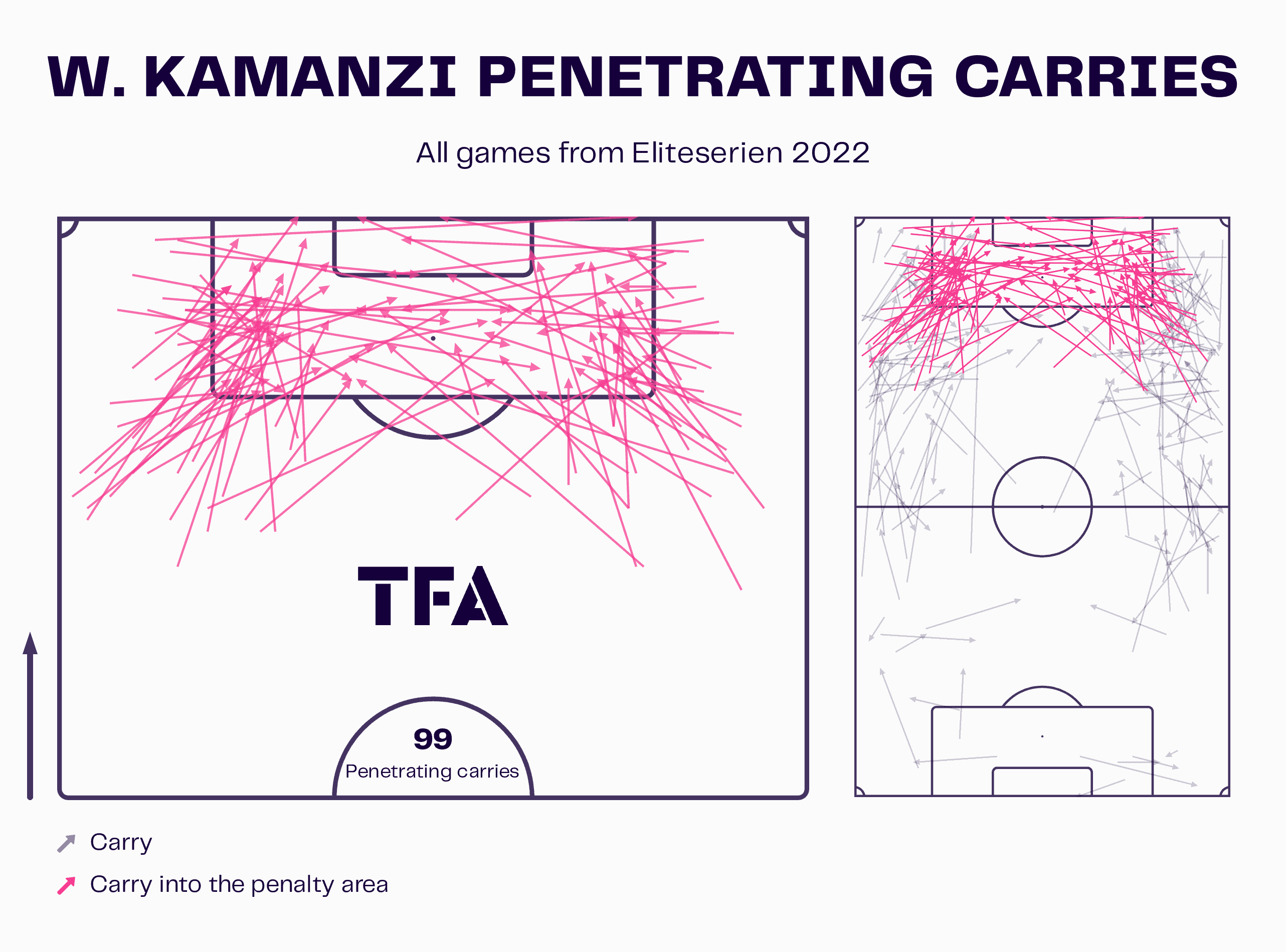
Kamanzi is quite unique as a full-back in terms of how he carries the ball. Firstly, we can see his penetrating carries from 2022 in figure 10, displaying the 22-year-old’s ability to break lines and drive the team forward with his dribbling quality, often valuably helping his team to progress into the opposition’s box.
While most full-backs will stay holding the width on the outside after receiving in or just on the edge of the final third, Kamanzi often looks to drive into more central positions with the ball. This can see him ending up in the half-spaces or often even occupying a number ‘10’ position after carrying the ball centrally from out wide.
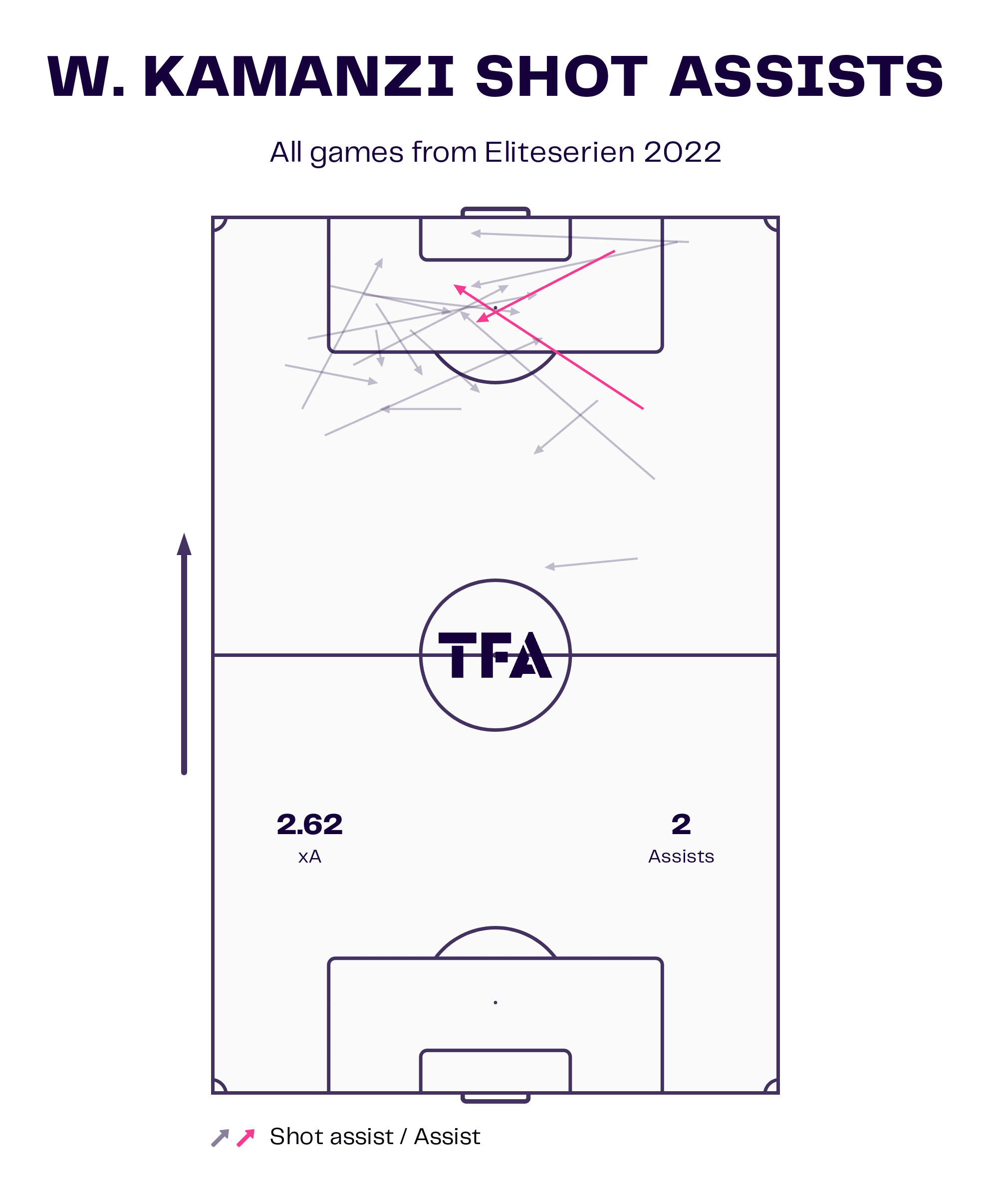
Kamanzi is happy to remain in these valuable, central positions when he ends up there, rather than quickly moving back out to the wing. He enjoys occupying this space and likes to create from the half-spaces or zone 14. His shot assist map from 2022 provides further context on the type of positions from which the 22-year-old likes to create.
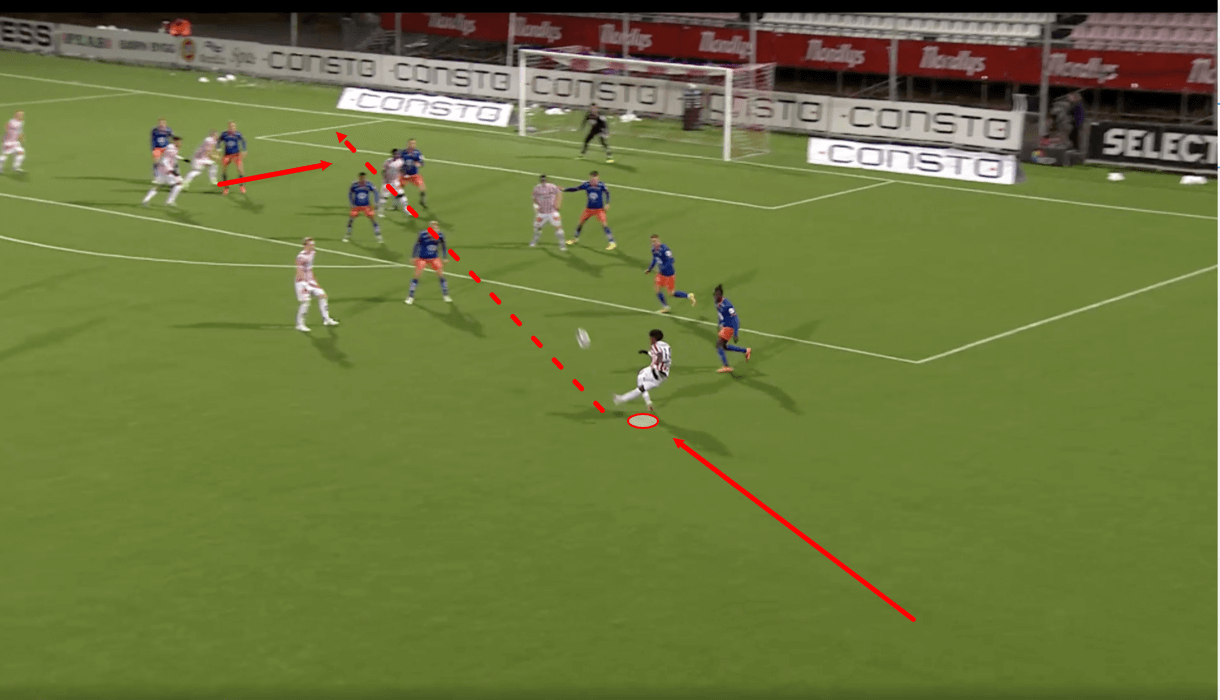
This goes for Kamanzi’s crossing too. As mentioned earlier, the full-back is a high-volume crosser and chief creator via this method for his team. However, it’s pretty rare to see Kamanzi crossing from the sideline, and he’s definitely not a ‘chalk on the boots’ style wide man. He loves coming inside and linking up with teammates via intricate short passing plays and working the ball into the box this way or crossing from the half-space as we see in figure 12 or playing a cross from further upfield, near the byline, either pulling the ball back into his teammate’s feet inside the box or chipping a ball towards a target from just around the edge of the area.
His rabona cross, which actually became an assist, in figure 12 is a perfect illustration of the full-back’s uniqueness, flair and confidence on the ball; he’s a creative player who’s not afraid to take risks and experiment on the ball, which makes him an attractive prospect to watch and a difficult often unpredictable player for opponents to try and cope with.
Kamanzi is a confident dribbler just as he’s a confident crosser. Very often in games, it’s common to see him just pull wider away from a near opposition defender just as the ball is played across making its way towards him. He’s very good at creating this separation from his marker just before receiving the ball, giving him space to receive while facing the goal and get his head up to look at how everything’s laid out ahead of him before driving at the defence.
Additionally, this separation gives Kamanzi some space to accelerate into after receiving as well, allowing him to build up speed as he seeks to beat the defender in the 1v1 and continue charging into the box.
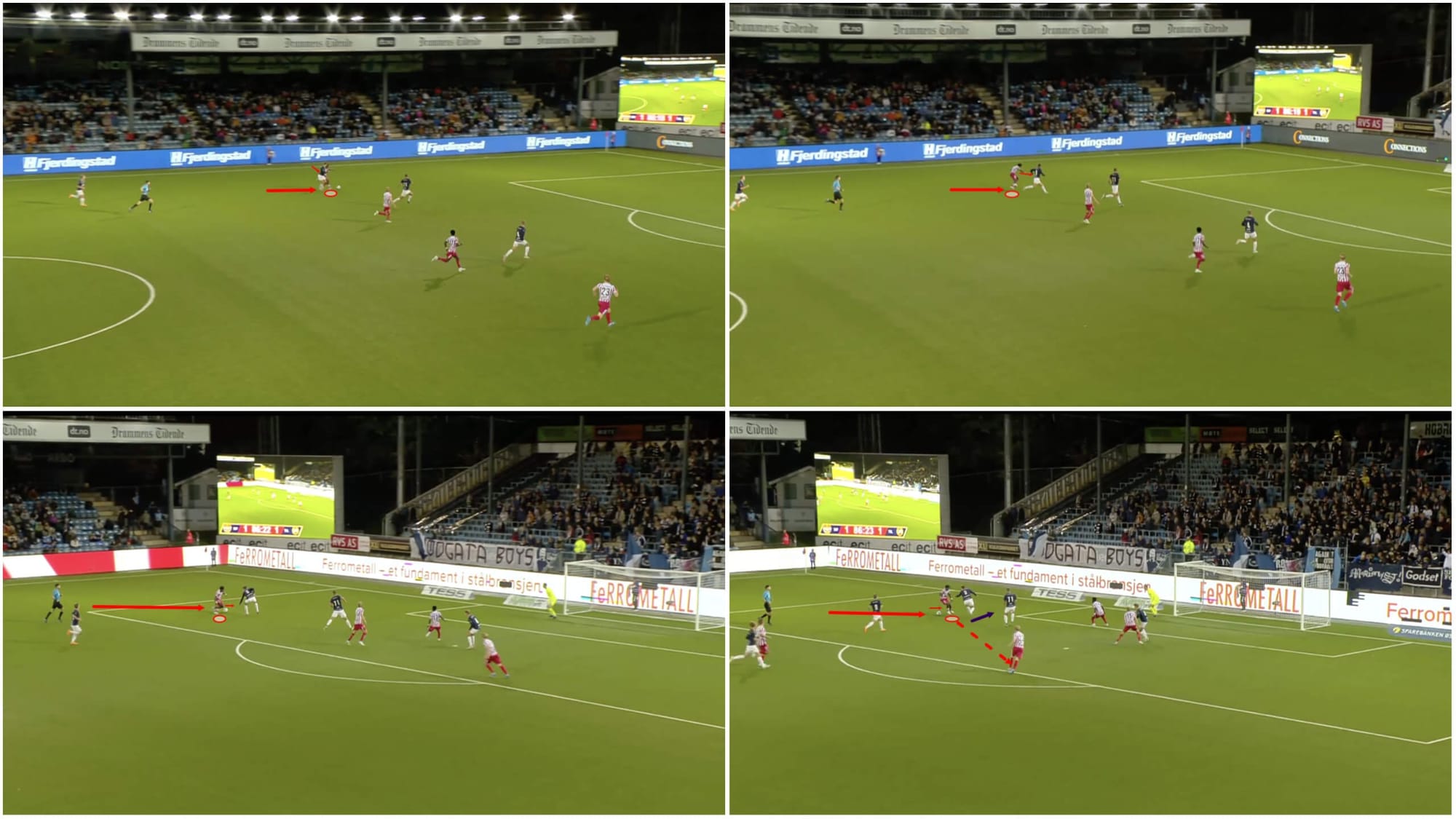
Figure 13 shows an example of Kamanzi using his body well to shove the opposition player away as they race towards this ball played in behind the opposition’s backline for the Tromsø man to chase down. After keeping the opposition defender away, Kamanzi can run at the defender and try to create something for his team via his dribbling quality, which is exactly what happens as this passage of play progresses.
Kamanzi is an agile dribbler and here, we see him demonstrating his quick feet via some ball rolls and stepovers that wrong-foot the defender a couple of times, eventually helping the quick-footed Kamanzi to forge a clear opening to play the ball to an attacking teammate making a late run into the box. This passage of play doesn’t result in a goal but does result in a shot on target — primarily created via Kamanzi’s excellent work on the ball to progress his team into a good position for chance creation.
At times, Kamanzi can hold onto the ball a bit too long and learning to release earlier on occasion will help him make his game even more efficient. However, it’s this same confidence and belief in his ability on the ball that makes him such a threat inside the final third whenever he receives in the space he creates via that quick movement for separation just before the pass is played out to him.
Defensively, Kamanzi is decent at using his body to unbalance attackers, protect the ball and prevent attackers from turning when receiving with their back to goal. He’s decent at managing his distance to an attacker in situations like that with their back to goal and forcing them away from the danger zones.
The right-back is quick at reacting to turnovers and getting himself back in the necessary defensive position, not leaving so much time to react that the rest of the team is left vulnerable for lengthy periods, requiring them to cover for him. Additionally, Kamanzi possesses good recovery pace.
However, there are plenty of negatives to his defensive game too. His positioning and reading of the game are not good. Kamanzi is not good at timing his jumps out from the backline and timing his challenges either — it’s common to see him get caught out as a result of bad timing when deciding to step out of the backline and close a player down or perform an interception or just generally defend in a more advanced position.
With Tromsø, Kamanzi defended in a team that didn’t like to press very aggressively. TIL are a far more standoffish team than Toulouse. As a result, Kamanzi will have to adjust to the stark contrast of Toulouse’s defensive approach. The 22-year-old right-back will have to get better at defending higher upfield if he’s to fully succeed as Toulouse’s right-back, despite all of his immense offensive pros.
Conclusion
In conclusion, it’s clear that Toulouse prioritised bolstering their offensive weaponry at right-back when they signed Kamanzi, as opposed to prioritising their defensive requirements. Kamanzi ticks pretty much every box Toulouse would want to be ticked from an offensive perspective and is a very exciting signing in that regard.
However, he must improve in some key defensive areas in order to be the perfect total package that Le Téfécé would want from their right-back.
We’d also say it’s not out of the question that Kamanzi’s future lies further upfield than the full-back positions, such as either left or right-wing. Some of his natural instincts, preferences and abilities, including his comfortability with cutting inside and operating in tight central spaces, could suit a lot of teams in these more advanced areas than they would suit the full-back/wing-back roles.





Comments